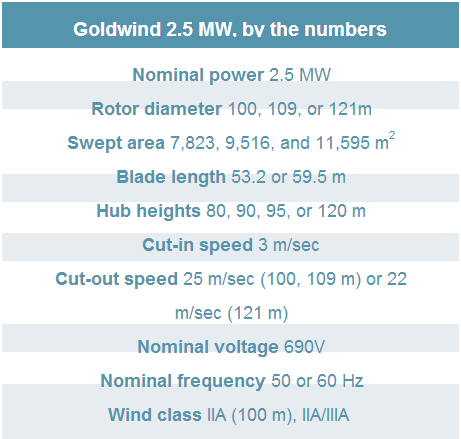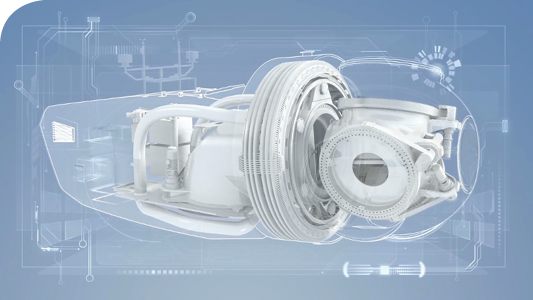When many turbines have so much in common – gearboxes, general layouts, and geared pitch drives – it’s refreshing to find even a little out-of-the-box thinking. For instance, the Chinese engineers behind the Goldwind 2.5 PMDD (permanent magnet, direct-drive) have broken with convention in several areas.

In the 2.5 MW PMDD, direct-drive technology uses a generator close coupled to the rotor for few turing parts, as opposed to the more than 13 gears and hundreds of other parts in a conventional gearbox.
Most noticeably, there is no gearbox, a trouble-prone unit in conventional designs. In its place is the permanent-magnet generator (PMG), which works efficiently with minimal losses. What’s more, the generator has only one moving part (the generator rotor) as opposed to the more than 13 gears and hundreds of other parts in a conventional gearbox. The PMG also eliminates the need for an electrical feed excitation and its resulting energy losses. A full-power converter, which allows for a reactive power feed, ensures compliance with grid-code requirements, and offers low-voltage and zero-voltage ride-through capabilities. Goldwind added that the generator has a smaller external diameter compared to wound rotor designs.
Rotor diameters of 100, 109 or 121m let the turbine maximizes production in a range of wind regimes. The 109-m, for example, is optimal for mid and low-wind speed environments (Class II and III), while the 121-m works best at low-wind speed sites (Class III).
The yaw system includes four induction drive motors and hydraulic brakes, and has a comparatively slow rotational speed. The company said this extends bearing service life in the drives, and eliminates the need for high-speed bearings, couplings and high-speed brakes. Also, an automatic lubricating system for the yaw bearing reduces the frequency of unplanned maintenance.
Goldwind said the design of the 2.5-MW PMDD removes the sources of expensive faults that require crane mobilization. The combination of the PMG and direct-drive technology result in lowest-in-class, top-head mass, putting crane requirements in the same class as some 1.5 MW offerings. Another plus: the single-main-bearing design allows for a smaller physical structure, which makes it easier to transport.
 Additionally, the turbine’s toothless, belt-driven pitch drive eliminates the localized wear experienced by gear-driven pitch drives, which then reduces backlash, vibration, and replacement costs. Ultra-capacitors are used in place of traditional lead-acid or gel batteries in the pitch system. Ultra-capacitors charge faster and more efficiently, and work well over a wider temperature range. The turbine also comes with microprocessor-controlled condition monitoring, including remote processing.
Additionally, the turbine’s toothless, belt-driven pitch drive eliminates the localized wear experienced by gear-driven pitch drives, which then reduces backlash, vibration, and replacement costs. Ultra-capacitors are used in place of traditional lead-acid or gel batteries in the pitch system. Ultra-capacitors charge faster and more efficiently, and work well over a wider temperature range. The turbine also comes with microprocessor-controlled condition monitoring, including remote processing.
For a digital copy of the entire August issue of Windpower Engineering & Development, pick here: http://goo.gl/9dlckH
Filed Under: News, Turbines





